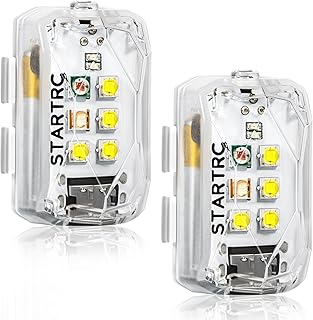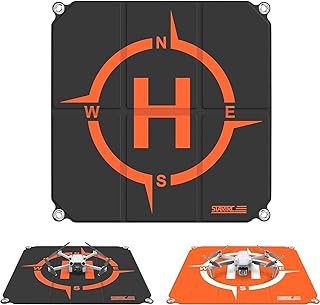Getting Started with Drone Photography: A STARTRC Guide
Congratulations on your new STARTRC drone! The world of aerial photography is vast and exciting. Here's a step-by-step guide to help you get started:
1. Safety First:
* Read the Manual: Familiarize yourself with your drone's functions, controls, and safety guidelines.
* Know the Laws: Research and obey local drone regulations, including airspace restrictions, flight limitations, and privacy concerns.
* Be Aware of Surroundings: Fly responsibly, avoiding populated areas, wildlife, and obstacles.
* Maintain a Safe Distance: Keep your drone within visual line of sight and avoid flying near airports or other sensitive areas.
2. Basic Drone Operation:
* Practice in Open Areas: Find a safe, open space to practice taking off, landing, and maneuvering your drone.
* Master the Controls: Learn how to control altitude, direction, speed, and camera tilt.
* Use the App: Explore the drone's app features, including camera settings, flight modes, and battery management.
* Familiarize with Battery Life: Understand the flight time of your drone's battery and plan accordingly.
3. Photography Fundamentals:
* Composition: Apply basic photography rules like the rule of thirds, leading lines, and framing.
* Light: Understand the impact of sunlight on your photos and utilize different lighting conditions to create various effects.
* Exposure: Experiment with shutter speed, aperture, and ISO to achieve the desired image quality and depth of field.
* Focus: Make sure your subject is in focus by using the camera's autofocus feature or manual focus.
* Perspective: Explore different angles and perspectives to capture unique and eye-catching shots.
4. Enhancing Your Drone Photography:
* Filters: Utilize ND filters to reduce light and create long exposures for smoother water or clouds.
* Polarizers: Enhance colors and reduce reflections for a more vibrant and clear image.
* Experiment with Flight Modes: Explore different flight modes like follow me, point of interest, or waypoint navigation to capture dynamic shots.
* Utilize Editing Software: Learn basic photo editing techniques to enhance your images, adjust colors, and remove unwanted elements.
5. Inspiration and Practice:
* Explore Different Locations: Find unique locations like landscapes, cityscapes, or natural wonders.
* Capture Different Subjects: Photograph various subjects such as wildlife, architecture, or events.
* Experiment with Different Styles: Try out different techniques and perspectives to develop your own style.
* Share and Get Feedback: Share your photos online, join drone photography communities, and seek feedback from other photographers.
Additional Tips:
* Plan your flights: Decide on your location, subject, and desired shots before you take off.
* Check the weather: Avoid flying in strong winds, heavy rain, or fog.
* Use a landing pad: A landing pad can help ensure a smooth landing, especially in uneven terrain.
* Back up your photos: Always back up your photos to your computer or cloud storage to prevent data loss.
Remember, drone photography is an ongoing journey of learning and creativity. Be patient, practice, and enjoy the process!


